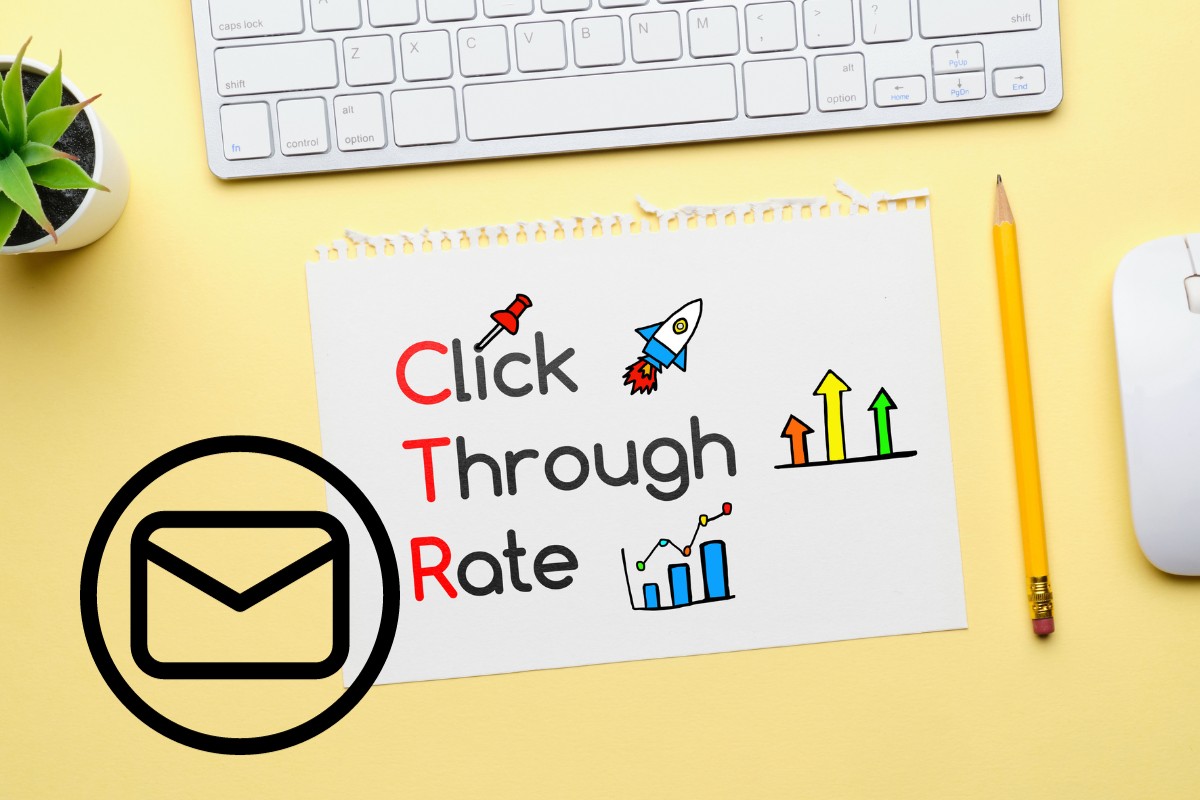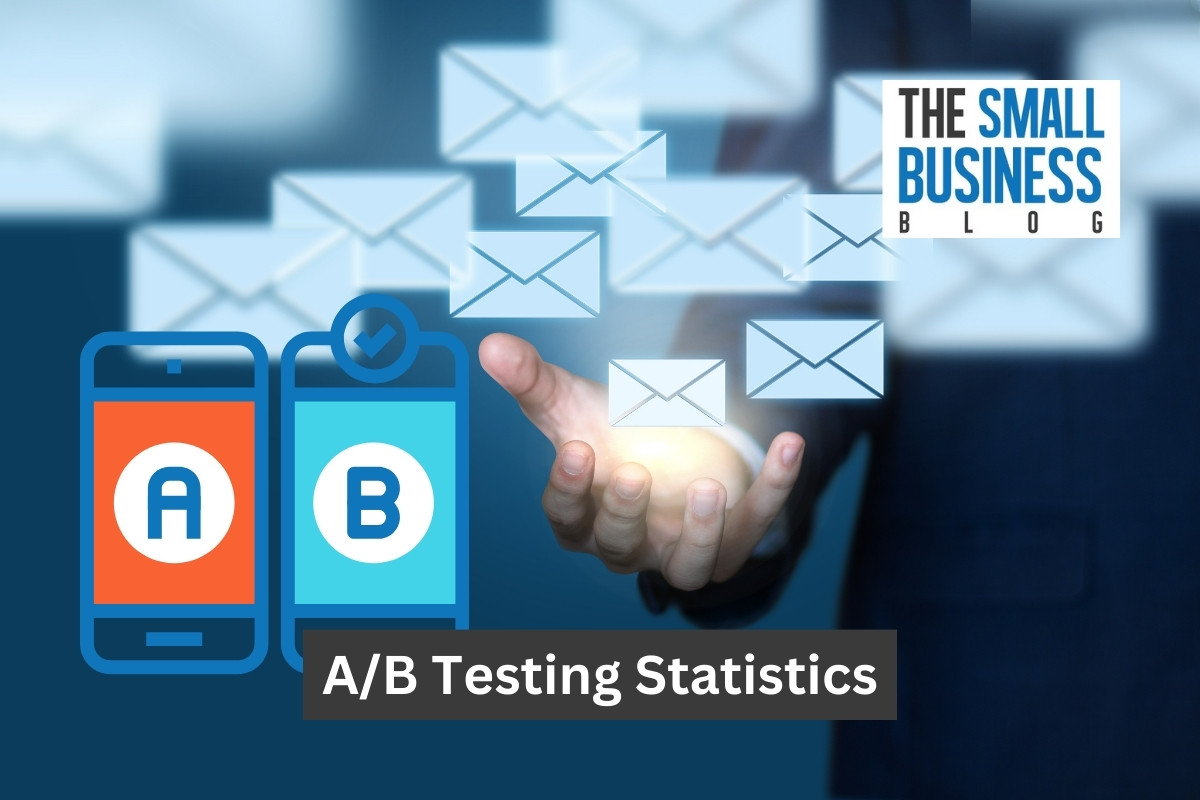A/B testing is a powerful tool that is used to compare two different versions of a web page, email, advertisement, or other digital content you use.
The goal is to see which one offers the best performance.
The idea is to assign random visitors to each version (A and B) to measure the impact of the different aspects of the content.
This includes measuring clicks, engagement, conversions, or sales respectively.
For instance, you can find out if images or videos make your page perform better and what content makes your content stand out and enjoy optimal performance.
Engaging in A/B testing is a great way to improve your outcomes.
More than just helping your content perform better, A/B testing can reduce the instances of data-driven and costly mistakes made from releasing your content without testing it.
In this article, we will be discussing A/B testing statistics to help you learn more about the best practices, tools to use, and other insightful data.
Post Contents
- 1 Key Statistics
- 2 Top A/B Testing Statistics in 2024
- 2.1 1. 61% of companies conduct fewer than five A/B tests monthly.
- 2.2 2. The global A/B testing software market was valued at $1.1 billion.
- 2.3 3. 77% of A/B testing is conducted on websites.
- 2.4 4. A/B testing is the number one Conversion Rate Optimization (CRO) method.
- 2.5 5. A/B testing is an essential way to boost conversions according to 70% of marketers.
- 2.6 6. A/B word testing can double PPC ads and CTRs.
- 2.7 7. 85% of companies focus on CTA catalysts for A/B testing.
- 2.8 8. 60% of companies feel that A/B testing for conversion rates is “highly valuable”.
- 2.9 9. A/B testing shows that simple subject lines achieve 541% more responses compared to creative subject lines.
- 2.10 10. An average A/B test can boost conversion rates by 49%.
- 2.11 11. 39% of businesses utilize A/B testing on their email subject lines.
- 2.12 12. 83% of global companies perform A/B testing on email marketing campaigns.
- 2.13 13. 79% of companies in France conduct A/B testing on email campaigns.
- 2.14 14. Successful A/B testing on eCommerce sites can result in a unique visitor increase of 50%.
- 2.15 15. A/B testing video landing pages can result in 12% higher customer engagements.
- 2.16 16. Only one out of every eight A/B tests generate winning results.
- 2.17 17. 63% of companies say it’s not hard to implement A/B testing.
- 2.18 18. 28% of marketers say they are happy with their conversion rates even after A/B testing.
- 2.19 19. Properly conducted A/B testing on headlines can boost conversions by 10%.
- 2.20 20. Dell claimed a 300% boost in conversion rate from using A/B testing.
- 3 FAQs
- 3.1 What is A/B testing?
- 3.2 When should A/B testing be used?
- 3.3 What are some examples of A/B testing?
- 3.4 What are the benefits of using A/B testing?
- 3.5 What are the challenges of A/B testing?
- 3.6 How do you run an A/B test?
- 3.7 What are A/B testing best practices?
- 3.8 What are common mistakes to avoid for A/B testing?
- 4 Conclusion
Key Statistics
- 61% of companies conduct fewer than 5 A/B tests monthly.
- The global A/B testing software market was valued at $1.1 billion.
- 77% of A/B testing is conducted on websites.
- A/B testing is the number one Conversion Rate Optimization (CRO) method.
- A/B testing is an essential way to boost conversions according to 70% of marketers.
- A/B word testing can double PPC ads and CTRs.
- 85% of companies focus on CTA catalysts for A/B testing.
- A/B testing shows that simple subject lines achieve 541% more responses compared to creative subject lines.
- An average A/B test can boost conversion rates by 49%.
Top A/B Testing Statistics in 2024

1. 61% of companies conduct fewer than five A/B tests monthly.
This statistic reveals that most companies conduct just a small number of AB tests per month.
According to statistics, a startling 61% of companies conducted fewer than five A/B tests per month.
Imagine the untapped opportunities they are missing out on for making data-driven business decisions.
Are they guessing?
(Zipdo)
2. The global A/B testing software market was valued at $1.1 billion.
A/B testing is a concept, but A/B testing software brings the concept to life.
As of 2022, the A/B testing software market was worth $1.1 billion (USD).
This market is expected to reach $3.4 billion (USD) by 2032.
During the forecast period 2022 to 2032, the CAGR is expected to be 11.35%.
(Nelio)
3. 77% of A/B testing is conducted on websites.
A/B testing is most used for testing website performance at 77% share of this usage.
The use of A/B testing of a website helps to optimize different elements to enhance overall website performance.
It’s important to know that testing one, single element at a time between the two A/B variants is crucial.
You should never try to test more than one element at a time.
(FinancesOnline)
4. A/B testing is the number one Conversion Rate Optimization (CRO) method.
Recent research reveals that A/B testing is the number one CRO method used by marketers.
CRO is short for Coversion Rate Optimization, which is vital for improving the performance of email marketing, website marketing, landing pages, and other marketing content forms.
In fact, 59% of marketers use A/B testing to optimize their copy every day.
(TrueList)
5. A/B testing is an essential way to boost conversions according to 70% of marketers.
More than 70% of marketers claim that A/B testing is the best way to boost conversions across marketing types.
Due to this information, split testing has become an essential part of CRO that results in boosting conversions on websites, landing pages, emails, and more.
(ZipDo)
6. A/B word testing can double PPC ads and CTRs.

One of the nuances of A/B testing is that by testing words, you can double your PPC (Pay-Per-Click) ads rate, and CTRs (Click-Through-Rate).
A/B testing isn’t just for website elements and landing pages.
It’s also effective for advertising.
(FinancesOnline)
7. 85% of companies focus on CTA catalysts for A/B testing.
How important is a Call-to-Action (CTA)?
You can only imagine how important CTAs are since a massive 85% of companies prioritize CTAs in A/B testing to find what triggers a click or tap response from visitors of a website, landing page, email, or other promotional and marketing content.
(Nelio)
8. 60% of companies feel that A/B testing for conversion rates is “highly valuable”.
One of the main reasons for using A/B testing is to improve conversion rates.
Recent data revealed that 60% of companies say that they find A/B testing for conversion rates to be “highly valuable”.
Moreover, 60% of businesses conduct A/B testing on their landing pages.
(Invesp, TrueList)
9. A/B testing shows that simple subject lines achieve 541% more responses compared to creative subject lines.
A MarketingSherpa case study showed that in a text run over 20 subject lines and sent to more than 45,000 subscribers, simple subject lines performed better than creative subject lines.
The findings showed that on average, 541% more responses were spurned from clear, simple subject lines across channels than those with creative subject lines.
(MarketingSherpa Blog)
10. An average A/B test can boost conversion rates by 49%.
Recent data suggests that the average A/B test can boost conversion rates of 49%.
This data confirms how dynamic and essential A/B testing is in terms of getting more conversions.
Likewise, there are other improvements that can be made simply by using A/B testing.
(ZipDo)
11. 39% of businesses utilize A/B testing on their email subject lines.

Our sources show that 39% of businesses use A/B testing to improve their email subject lines.
We already found that simple subject lines generate 541% more responses than creative ones.
Moreover, 37% of businesses also run A/B testing on content, 36% on date/time, and 23% on preheaders.
(FinancesOnline)
12. 83% of global companies perform A/B testing on email marketing campaigns.
Speaking of email, A/B testing, 83% of global companies conduct A/B testing on their email marketing campaigns.
Thye United States dominates the A/B testing of email marketing campaigns at 93% out of the global figure of 83%.
(MarTech)
13. 79% of companies in France conduct A/B testing on email campaigns.
While the United States leads in terms of A/B testing of email campaigns, 79% of French companies do the same.
Also, 77% of German companies conduct A/B testing on their email marketing campaigns.
(MarTech)
14. Successful A/B testing on eCommerce sites can result in a unique visitor increase of 50%.

A successful A/B test is one where the test has clearly defined goals and is properly performed and understood.
In terms of eCommerce websites that earn an average of $3 per unique visitor, a successful A/B test can boost that by 50%.
Therefore, the website can get more unique visitors and increase revenues as well.
(VWO)
15. A/B testing video landing pages can result in 12% higher customer engagements.
As you can already see, A/B testing covers a vast number of channels and other aspects.
That said, A/B testing conducted on video landing pages on average results in 12% more engagements.
(ZipDo)
16. Only one out of every eight A/B tests generate winning results.
One study by VWO revealed that only one out of every eight A/B tests show any significant positive results.
The main reason for this is a lack of A/B testing knowledge and outcome understanding.
It can be frustrating, but this can be overcome.
(FinancesOnline)
17. 63% of companies say it’s not hard to implement A/B testing.
Data shows that 63% of companies think A/B testing isn’t hard to implement.
However, 7% say it’s very difficult to implement.
Why is it more challenging for some companies than it is for others?
This is likely due to lack of understanding and knowledge, or the lack of proper resources.
(Invesp)
18. 28% of marketers say they are happy with their conversion rates even after A/B testing.
A/B testing must be done properly and be understood by the entities running them.
One reason why 28% of marketers are happy with their post A/B testing conversion rates is that they understand what they are doing.
A/B testing is only effective when it’s done right.
It pays to increase your knowledge of A/B testing before engaging in it.
(TrueList)
19. Properly conducted A/B testing on headlines can boost conversions by 10%.
Engaging headlines can be hard to come by unless you know how to properly conduct A/B testing to make them better.
This includes email headlines, landing page headlines, and any marketing or promotional headlines.
In fact, proper A/B testing on headlines can boost conversions by 10%.
(ZipDo)
20. Dell claimed a 300% boost in conversion rate from using A/B testing.

It’s important to know that Fortune 500 companies that use A/B testing reveal their improvements from it.
Dell reported a 300% boost in their conversion rates after A/B testing.
Moreover, Bing and Google controlled experiments in A/B testing generated positive outcomes in the new ideas they have tested.
That said, A/B testing can be effective for anyone in any industry when done right.
(FinancesOnline)
FAQs
What is A/B testing?
A/B testing, also referred to as “split testing”, is one method used to compare two versions of a variable like a web page, email, page element, etc. to learn which version performs better.
Once you have the details worked out for A/B testing, you randomly assign visitors to one of the two versions and track the results/behavior.
When should A/B testing be used?
A/B testing is conducted across several variables including:
1. Web page design
2. Content (textual, imagery, video)
3. Headlines
4. CTAs (Call-to-Action)
5. Email subject lines
6. PPC (Pay-per-Click) ad copy
7. Product descriptions
What are some examples of A/B testing?
We did some digging to uncover a few successful instances of A/B testing which are as follows:
1. Airbnb was able to boost their bookings by 26% simply by changing the order of their photos on listings.
2. Amazon boosted conversions by 40% when they personalized their product recommendations on the homepage.
3. Netflix increased their sign-ups by 20% when they changed their CTA button color from red to green.
Keep in mind that A/B testing results will differ across industries and content.
What worked for Amazon, Netflix, and Airbnb may not work for you.
You must do your own A/B testing to find what works for you.
What are the benefits of using A/B testing?
Here is a list of A/B testing benefits:
1. Boost conversion rates
2. Enhance customer experience
3. Lower bounce rates
4. Reduce risk and cut costs for improving your content
5. Data-driven decision making so you’re not just guessing
What are the challenges of A/B testing?
Here are some of the challenges you may experience with A/B testing:
1. Selecting the proper elements to test
2. Ensuring statistical significance
3. Implementing a winning variation
4. Interpreting results
How do you run an A/B test?
Here are the steps to run an A/B test:
1. Identify the variable you want to test
2. Create two versions of said variable
3. Choose your A/B testing tool (Google Optimize, VWO, Optimizely, etc.)
4. Set up your test
5. Launch the test
6. Analyze your results
What are A/B testing best practices?
There are some best practices to know before engaging in A/B testing.
This includes these best practices:
1. Have a clear goal for the test
2. Test only one variable at a time
3. Run A/B testing long enough to see statistically significant results
4. Carefully analyze your results and make sure you understand why one version performed better than the other.
5. Use your results to make regular improvements to your content (website, marketing campaign, etc.)
What are common mistakes to avoid for A/B testing?
It’s challenging enough to manage A/B testing without stacking on common mistakes during the process.
Here are some common mistakes to avoid for A/B testing:
1. Failing to have a clear goal set
2. Testing more than a single variable at a time
3. Not running tests long enough
4. Not carefully analyzing results.
Conclusion
Now you should see how powerful A/B testing is.
It’s been proven multiple times over the years to help optimize websites, marketing campaigns, and more types of content.
Furthermore, it can help you to improve the customer experience, avoid costly mistakes, find new opportunities, and make data-driven decisions.
A/B testing is influenced by a variety of errors, factors, and biases.
Remember, A/B testing isn’t easy as it requires a lot of planning, execution, analysis, and iteration.
Likewise, it requires skills, knowledge, tools, and other resources.
After reading these A/B testing statistics, we hope you have a clearer perception of the concept and feel more enlightened and confident about A/B testing.
Also, we hope it helps you improve your A/B testing and your content.
If big corporations and Fortune 500 companies can improve their conversions, engagements, and other aspects of their metrics, why can’t you?






























